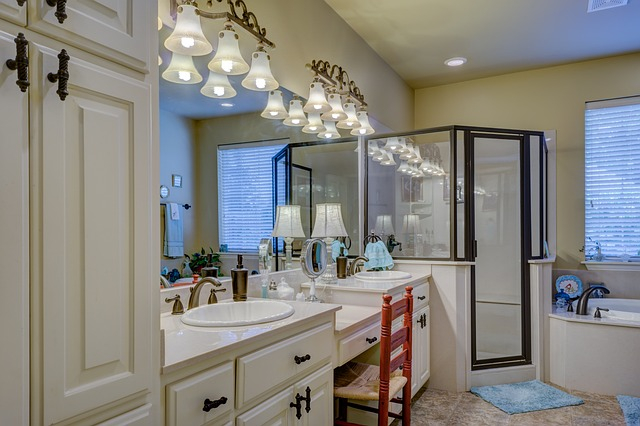There are different types of bathroom lighting in the, including ambient lighting, task lighting, and accent lighting. You can decide what kind of lighting you need based on the purpose of the space. For example, ambient lighting replaces natural light by providing illumination around the room’s perimeter. Accent lighting helps eliminate cast shadows and adds depth to the room.
Ambient lighting
Ambient lighting in a bathroom is an essential part of a bathroom design. It should provide ample illumination that spreads light evenly throughout the room. You can create this ambiance by using ceiling lights or built-in lights. Whether you choose a recessed or flush-mount light fixture, you should aim to place the light in the middle of the ceiling, halfway up the height.
Ambient lighting in a bathroom is essential because it helps ease the transition from sleep to awake. It also makes grooming routines visually stress-free. It also helps define the space and add crucial functions. There are three main types of bathroom lighting: general, task, and accent. Every kind of lighting serves a specific function.
Task lighting
Task lighting is a critical element of any bathroom lighting scheme. Typically, these lights are installed around the vanity area or in the sink’s vicinity. You should also install a light on either side of the mirror. This is because a light above a mirror can create a glare, so placing your task light on the side is essential. This will cast a more even glow. Task lights can also be installed vertically, such as in the form of sconces, vertical lighting bars, or pendants.
Whether you’re looking for a way to add illumination to a specific area or brighten up the entire room, task lighting will add more ambiance to your bathroom. Generally, this type of lighting is focused on one particular task and will not cause eye strain.
Space-saving
According to the experts at retailers like Build.com, bathroom lighting is one of the best ways to make your space appear more prominent. It can double as ambient lighting and helps you save on energy costs. In addition, these fixtures are incredibly durable and can last a very long time. LED bulbs are an excellent choice for bathrooms because of their long lifespan and low energy consumption. The main advantage of LEDs and CFLs is that they require less power. They also produce more natural light. However, they are less efficient than CFLs or LEDs.
Safety
Safety of bathroom lighting is crucial in the home, especially in wet areas. This is why bathrooms require specific types of lighting and have exceptional standards. For example, lighting fixtures in the shower and bath zone must be low-voltage and IP-rated. They should also be waterproof and non-corrosive. Lighting in wet areas must be waterproof and installed six feet above water lines. Small waterproof accent lights can also be used on the shower floor. All lights in wet areas should run on a circuit that protects against electric shock. The switches must also be located at least three feet away from the edge of the bathtub or shower.
Energy efficiency
When it comes to bathroom lighting, energy efficiency is crucial. LEDs are the most efficient option for bathroom lighting because of their longer life and high light output. They can last 50,000 to 100,000 hours, twice as long as incandescent bulbs. They can also reduce energy consumption by up to 75 percent. LED bulbs also come in correlated color temperatures for a warmer, more comfortable light in the bathroom.
Bathroom lighting can be the most energy-intensive room in the house, and there are several ways to save energy and money. For one, using a shorter shower can save water. Another energy-efficient option is using faucet-on/faucet-off technology. Installing motion sensors is also a great way to save energy. You can also opt for cold water-only fixtures. Although they may cost a little more upfront, the money you save in the long run will make them more than worth it.
